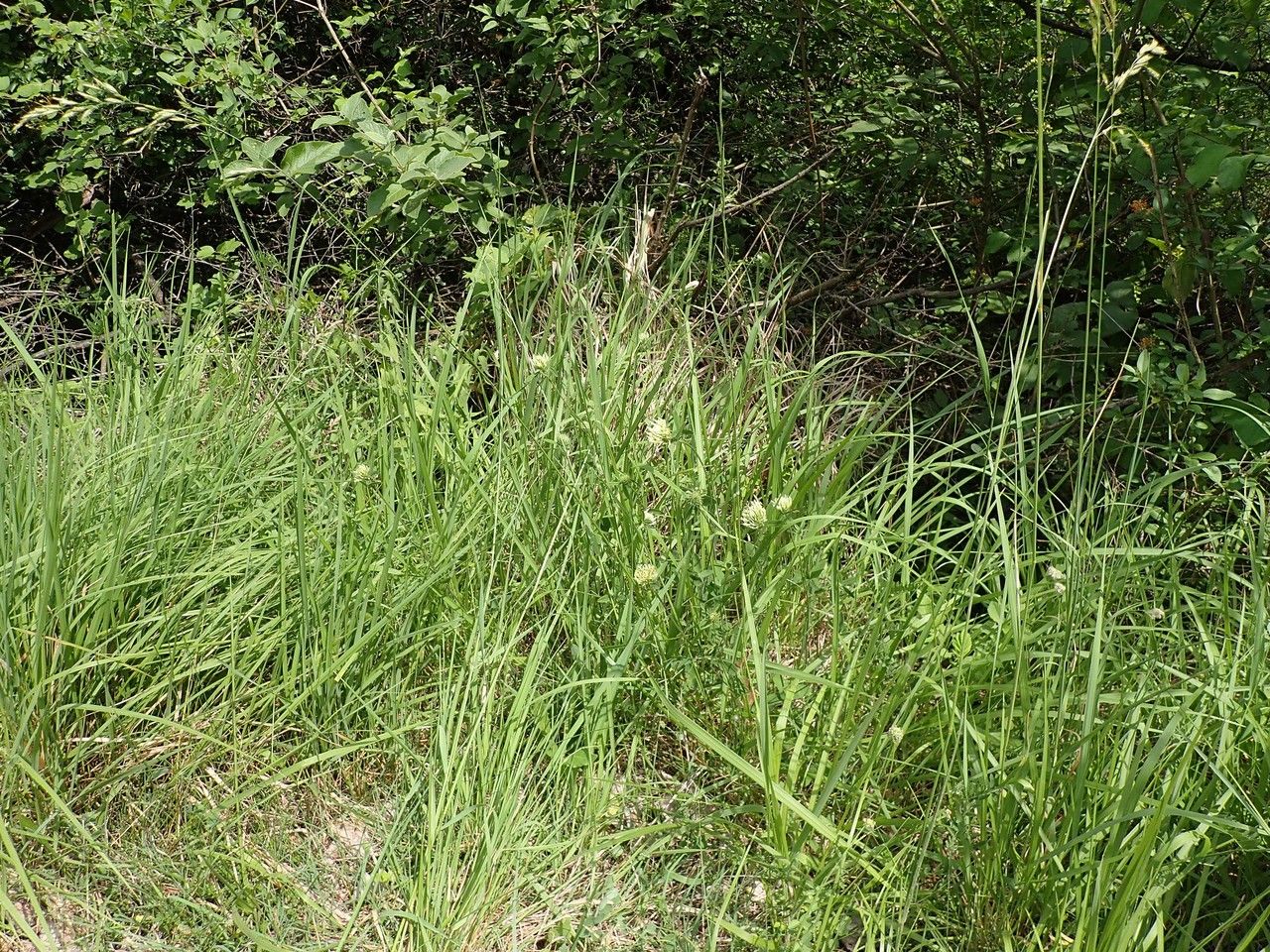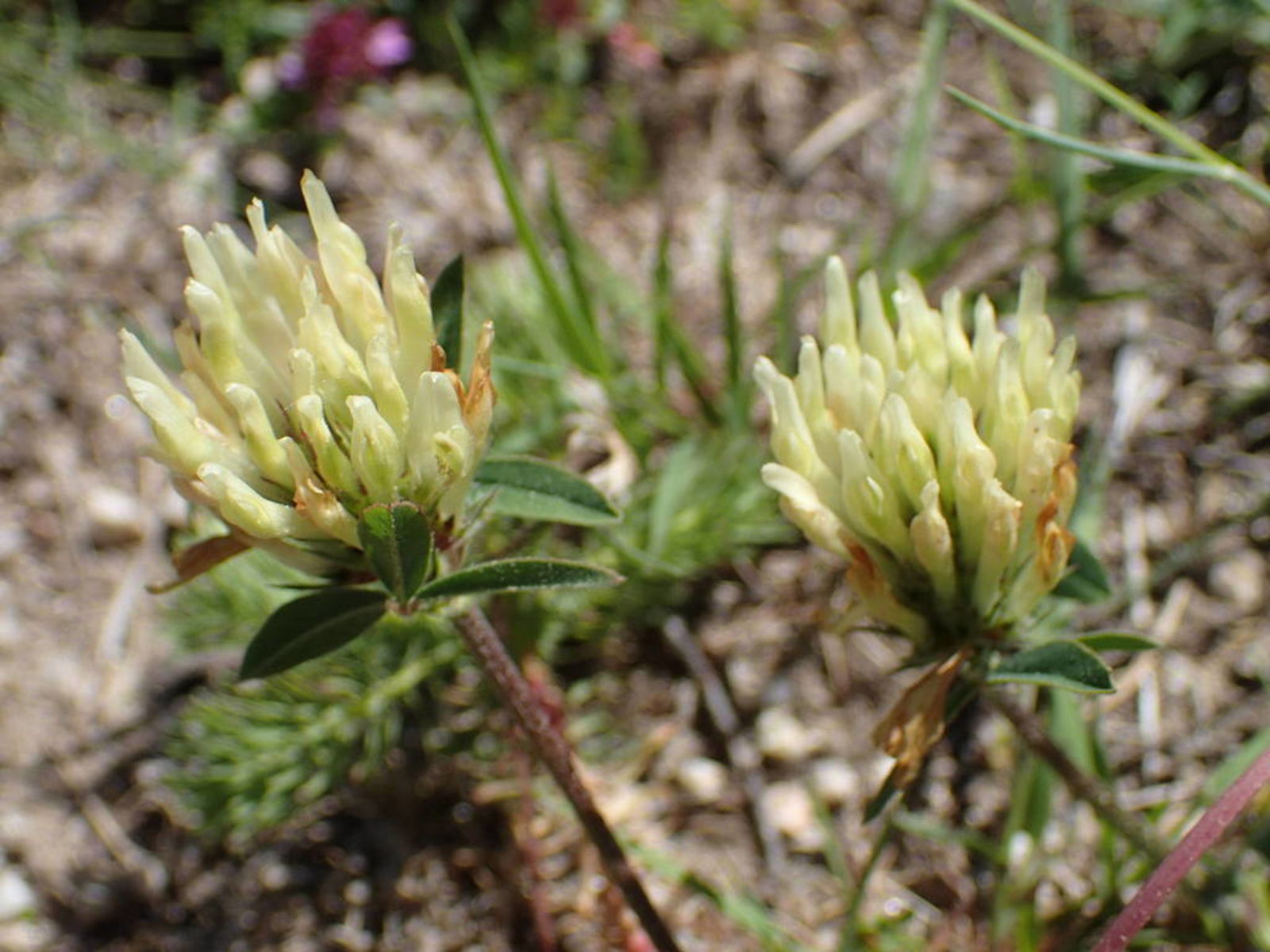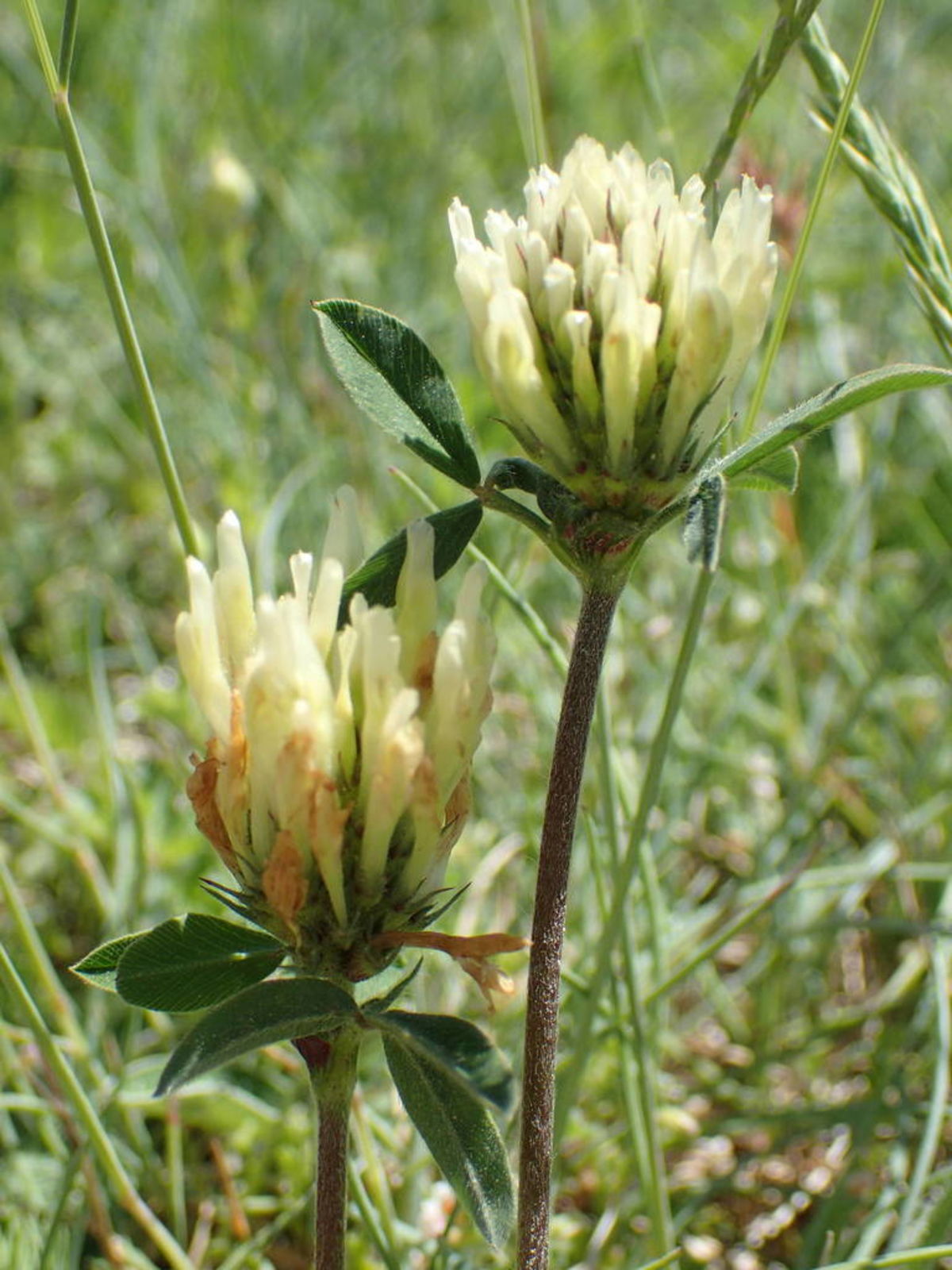Yellow-white clover
trifolium ochroleucon
Also known as: ["Yellow-white clover","Ochroleucon clover"]
Overview
A perennial clover species with yellowish-white flowers, native to Europe and parts of Asia.
Benefits & Perks
["wildlife attractant (bees, butterflies, birds)","drought tolerant","low maintenance"]
Botanical Classification
| Phylum: | Magnoliophyta |
| Class: | Magnoliopsida |
| Order: | Fabales |
| Family: | Fabaceae |
| Genus: | Trifolium |
| Botanical Name: | Trifolium ochroleucon |
Plant Characteristics
Basic Information
- Category: Herbs & Weeds
- Suitable Location: garden bed or container in a location with good air circulation
- Suitable For:
- Is Weed: No
- Allergenicity: low
Environmental Needs
- Climate: {"temperatureRange":"5–30°C"}
- Hardiness: {"zones":"4–8"}
- Misting: rarely required, only if ambient humidity is very low
- Drainage: Fast-draining to prevent waterlogging.
- Soil Type: Well-draining, loamy soil with added organic matter; can tolerate poor soils but thrives with enrichment.
Maintenance Level
- Maintenance Level: low
- Toughness Level: moderate
- Pruning Frequency: Light pruning after flowering; more intensive pruning in late winter or early spring before new growth begins.
- Pruning Intensity: Light to moderate; avoid heavy pruning unless necessary to control size or shape.
Care Details
Ideal Sunlight Coverage:
Full sun to partial shade (4–6 hours of direct sunlight daily); tolerates light shade in hot climates.
Sunlight Tolerance Tips:
Acclimate plants gradually to direct sunlight to prevent scorching; provide afternoon shade in hot regions; adjust indoor placement to mimic natural light conditions.
Care Requirements
Care Difficulty
easymoderate
Sunlight
full sun to partial shade
Rotate plants for even light exposure; use sheer curtains to filter intense sunlight; avoid placing in drafty areas.
Watering
every 7–10 days during active growth, reduce in winter
Water thoroughly but infrequently; ensure proper drainage; avoid wetting foliage.
Soil
well-draining, loamy soil with moderate organic content
pH: Slightly acidic to neutral (pH 6.0–7.0).
Ensure good drainage to prevent root rot; enrich soil with organic matter annually; avoid compacted soil.
Temperature
Prefers cool to moderate temperatures (60–75°F or 15–24°C); tolerates light frost but avoids extreme heat.
Avoid sudden temperature fluctuations; protect from cold drafts; maintain consistent humidity in dry conditions.
Fertilizing
every 4–6 weeks during growing season with balanced liquid fertilizer
Apply fertilizer after watering to prevent root burn; flush soil occasionally to prevent salt buildup; use organic options like compost for gentle feeding.
Propagation
Methods
Stem cuttings or division; stem cuttings are more common for home growers.
Step-by-Step Propagation Guide
- Take a 4–6 inch cutting with at least two nodes.
- Remove lower leaves.
- Dip in rooting hormone (optional).
- Plant in moist medium.
- Keep warm and humid.
Best Time: Spring or early summer when the plant is actively growing.
Environment
Warm, humid environment with indirect light; maintain consistent moisture without waterlogging.
Medium
Well-draining potting mix with perlite or sand; can also root in water initially.
Hormone
Optional but recommended for faster rooting; use a mild rooting hormone powder or gel.
Timeline
Roots typically develop in 2–4 weeks; new growth may appear in 6–8 weeks.
Tools Needed
Pruning shears, rooting hormone, small pots, well-draining medium, plastic wrap or propagator.
Quick Tips
Use clean tools to prevent disease; maintain high humidity with a plastic cover; avoid direct sunlight during rooting.
Pruning & Repotting
Pruning Guide
Method
Pinch back tips to encourage branching; deadhead spent flowers by cutting just above a leaf node.
Pruning Plan
Prune to maintain shape, encourage bushier growth, and remove spent flowers to promote reblooming.
Tools
Pruning shears, sharp scissors, gloves.
Checklist
Use clean tools; prune dead or damaged growth; remove spent flowers; shape as needed; avoid pruning in extreme weather.
Repotting Guide
Best Season
Early spring before active growth begins.
Pot Size
Choose a pot one size larger (1–2 inches wider in diameter) than the current one.
Method
Remove the plant gently; trim any circling roots; place in a new pot with fresh, well-draining soil; water thoroughly after repotting.
Suggestions
Repot every 2–3 years or when the plant becomes root-bound; beneficial for maintaining vigor and preventing overcrowding.
Checklist
Select appropriate pot size; prepare fresh soil mix; trim roots if necessary; water after repotting; place in appropriate light.
Advanced Care Tips
Watering Mastery
Watering Checklist
Check soil moisture before watering; water deeply; ensure drainage; avoid overhead watering.
How to Apply Water Properly
Water at the base of the plant, ensuring moisture reaches the root zone; allow excess water to drain away; water early in the day to minimize evaporation and fungal issues.
Watering Schedule Tips
Water deeply when the top 1–2 inches of soil are dry; reduce frequency in winter to prevent root rot.
Soil Improvement
Add compost or well-rotted manure for fertility; incorporate perlite or sand for drainage; use mulch to retain moisture and suppress weeds.
Temperature Stress Management
Signs of Temperature Issues
Wilting, yellowing leaves, stunted growth, or flower bud drop in response to extreme temperatures.
Cold Stress
Slows growth and may cause leaf discoloration or dieback in prolonged cold; roots can become damaged in freezing conditions.
Solution: Provide frost protection in winter; mulch around the base to insulate roots; move potted plants to a sheltered location.
Hot Stress
Leaves may wilt, curl, or scorch; flowering may be reduced; growth can become stunted.
Solution: Provide shade during peak heat; increase watering frequency; use mulch to retain soil moisture.
Fertilizing Guide
Fertilizing Checklist
Use diluted fertilizer; apply during active growth; avoid winter feeding; flush soil periodically.
Fertilizing Method
Use a balanced, water-soluble fertilizer diluted to half strength; fertilize every 4–6 weeks during the growing season (spring and summer); avoid fertilizing in winter.
Common Problems & Solutions
Toxicity Warning
Cats
Non-toxicTrifolium ochroleucon is not considered toxic to cats. There are no known toxic effects or physiological impacts associated with its ingestion by felines.
⚡ Toxic If:
if eaten
Dogs
Non-toxicTrifolium ochroleucon is not known to be toxic to dogs. There are no documented cases of adverse effects from ingestion by canines.
⚡ Toxic If:
if eaten
Humans
Non-toxicTrifolium ochroleucon, commonly known as yellow-white clover, is generally considered non-toxic to humans. There are no known toxic effects or physiological impacts associated with its consumption.
⚡ Toxic If:
if eaten
Frequently Asked Questions
Q: Is Trifolium ochroleucon toxic to pets?
A: No, it is non-toxic to dogs and cats.
Q: Does this plant attract wildlife?
A: Yes, it attracts bees, butterflies, and birds.
Q: How easy is it to care for?
A: It is easy to care for with low maintenance requirements.
Quick Reference
| Family: | Fabaceae |
| Care: | easy |
| Light: | full sun to partial shade |
| Water: | every 7–10 days during activ |
Get Expert Care Tips
Download the Plantious app for personalized care reminders and plant identification!
Google Play App Store








